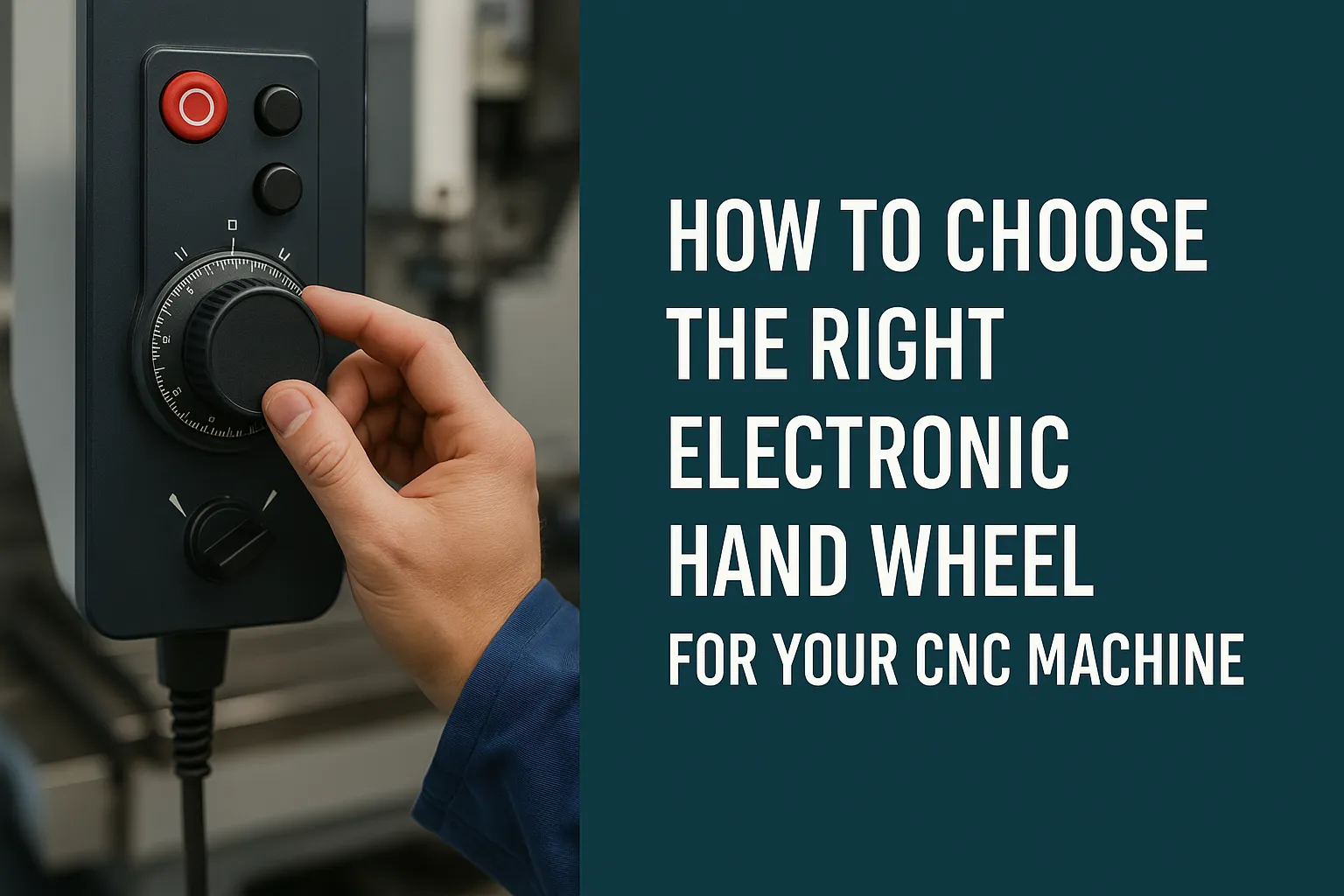
Introduction
An electronic hand wheel, often called a manual pulse generator (MPG), plays a vital role in precise CNC machine operation. Whether you’re setting workpieces, fine-tuning tool paths, or performing manual machining tasks, the right hand wheel makes a significant difference in control and efficiency. In this article, we’ll walk you through the key points to consider when selecting an electronic hand wheel for your CNC machine.
1. Understand the Role of an Electronic Hand Wheel
An electronic hand wheel allows operators to manually control CNC machine axes by generating pulse signals. It’s widely used for:
- Fine positioning during setup
- Manual machining adjustments
- Maintenance tasks and troubleshooting
A good hand wheel enhances operator control, reduces setup errors, and improves production safety.
2. Compatibility with Your CNC System
Before choosing a hand wheel, make sure it matches your CNC system:
- Pulse Interface Type: Check if your system uses RS422, RS232, or open-collector signal types.
- Axis Compatibility: 1-axis, 2-axis, or multi-axis models.
- Control Brands: Such as FANUC, SIEMENS, MITSUBISHI, etc.
3. Hand Wheel Design and Build Quality
- Key design elements to consider:
- Hand feel: Smooth rotation, clear tactile feedback.
- Housing material: Robust ABS plastic, metal, or rubberized coating.
- Button layout: Emergency stop, axis selector, and multiplier switches should be intuitive and responsive.
- Cable or Wireless: Wired hand wheels are common, but wireless models offer more flexibility in large machines.
A sturdy, ergonomic hand wheel improves both durability and user experience.
4. Pulse Per Revolution (PPR) and Resolution
Different models offer varying resolution levels:
- Common settings: 25PPR, 100PPR, 400PPR.
- Higher PPR allows finer control, especially important for precision setups.
Choose according to your machine’s sensitivity and the type of machining tasks you perform.
5. Other Features to Look for
- Magnetic Base: Allows the hand wheel to be easily placed on the machine frame.
- Cable Length: Ensure it’s long enough for your setup.
- LED Indicators: Useful for status confirmation.
- Durability Ratings: Look for IP ratings (like IP65) for dust and water resistance.
Conclusion:
Selecting the right electronic hand wheel is crucial for achieving precision, safety, and efficiency in CNC operations. By focusing on system compatibility, build quality, pulse resolution, and ergonomic features, you can greatly enhance your machine control experience. Take time to evaluate your needs carefully—and invest in a hand wheel that matches the demands of your workshop.
